Canadian pale
In heraldry and vexillology, a Canadian pale is a centre band of a vertical triband flag (a pale in heraldry) that covers half the length of a flag, rather than a third as in most triband designs. This allows more space to display a central image (common charge). The name was suggested by Sir Conrad Swan, Rouge Dragon Pursuivant (a heraldic office in Britain), and first used by Queen Elizabeth II as Queen of Canada proclaiming the new Canadian flag on 28 January 1965.[1] Properly, the term should only apply to Canadian flags, though in general use the term is also used to describe non-Canadian flags that have similar proportions.[2]
The classic Canadian pale is a square central panel occupying half of a flag with 1:2 proportions. However, vexillological usage applies it to any central band that is half the width of the flag, even if this renders it non-square. The term Canadian pale is also used for flags which do not originate in Canada. The 3:5 proposed flag of Taiwan and the 7:11 flag of Saint Vincent and the Grenadines are both described as having a Canadian pale.
The Canadian pale is a popular feature of sub-national and municipal flags from Canada developed after 1965. A few examples can be found in the flag of the Northwest Territories and the Flag of Yukon, and of the cities of Edmonton, Alberta; Cornwall, Ontario, Hamilton, Ontario and Burlington, Ontario.
The term is sometimes used in an even looser sense to refer to any flag with a larger central panel, irrespective of whether or not it covers half the flag. By this looser description, the flag of Norfolk Island (stripes in a ratio of 7:9:7) and the flag of Iowa (ratio legally undefined, but usually the central stripe is less than twice that of the outer stripes) are sometimes considered to have a Canadian pale.
By analogy, any flag which has a central horizontal stripe that is half the height of the flag is sometimes said to have a Spanish fess.
Heraldry
In coats of arms, and heraldry in general, a 'Canadian pale' is what might well be referred to in South African heraldry as a 'broad pale' as its width is half that of the shield on which it is shown as opposed to the ordinary pale's third to a quarter. They are most commonly used in Canadian heraldry.
Flag gallery
- Canadian flags
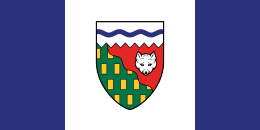
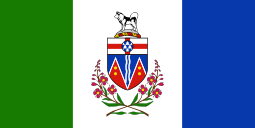
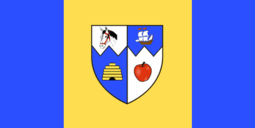
 Flag of Cornwall, Ontario, Canada
Flag of Cornwall, Ontario, Canada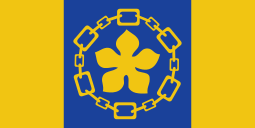
 Flag of the Nisga'a Nation, British Columbia, Canada
Flag of the Nisga'a Nation, British Columbia, Canada Flag of North Cowichan, British Columbia, Canada
Flag of North Cowichan, British Columbia, Canada%2C_Quebec.gif)
 Flag of Grise Fiord, Nunavut, Canada
Flag of Grise Fiord, Nunavut, Canada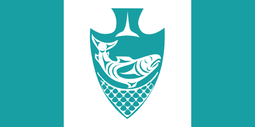
- Other flags
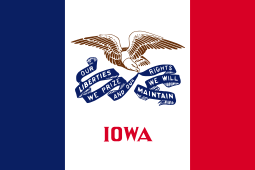

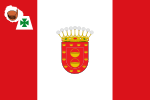


 Flag of Taiwan (Liu proposal, 1996)
Flag of Taiwan (Liu proposal, 1996) Flag of Central Ostrobothnia, Finland
Flag of Central Ostrobothnia, Finland
References
- Kibbey, Stephen, ed. (September 2006). "Did you know... ?" (PDF). The Seaxe: Newsletter of the Middlesex Heraldry Society. Ealing, London: Middlesex Heraldry Society (52): 12. Retrieved December 26, 2011.
For a fuller account see 'A King in Canada' by Sir Conrad Swan, pp.242-247.
- Nelson, Phil (January 2, 2010). "Dictionary of Vexillology". Flags Of The World website. CANADIAN PALE. Retrieved May 4, 2020.
.svg.png)